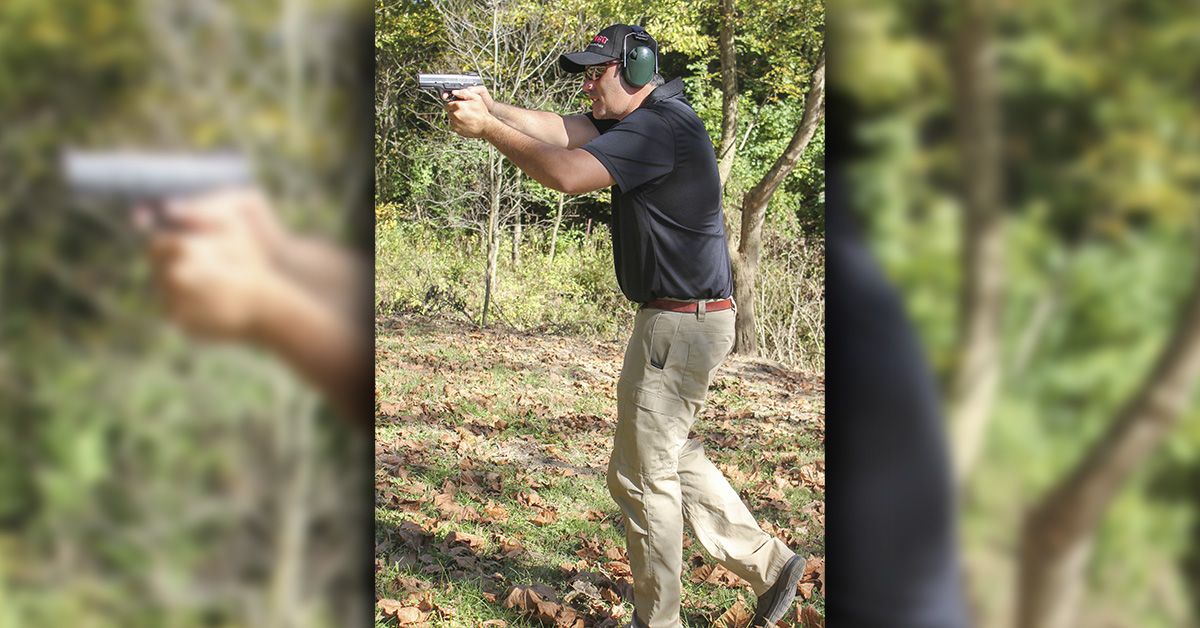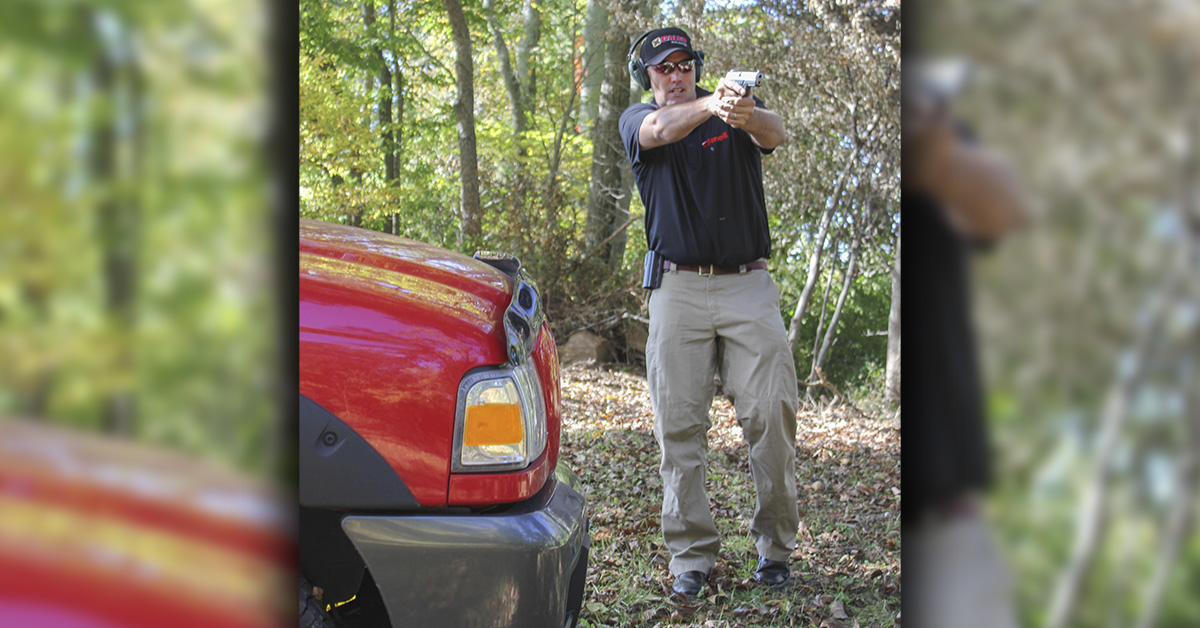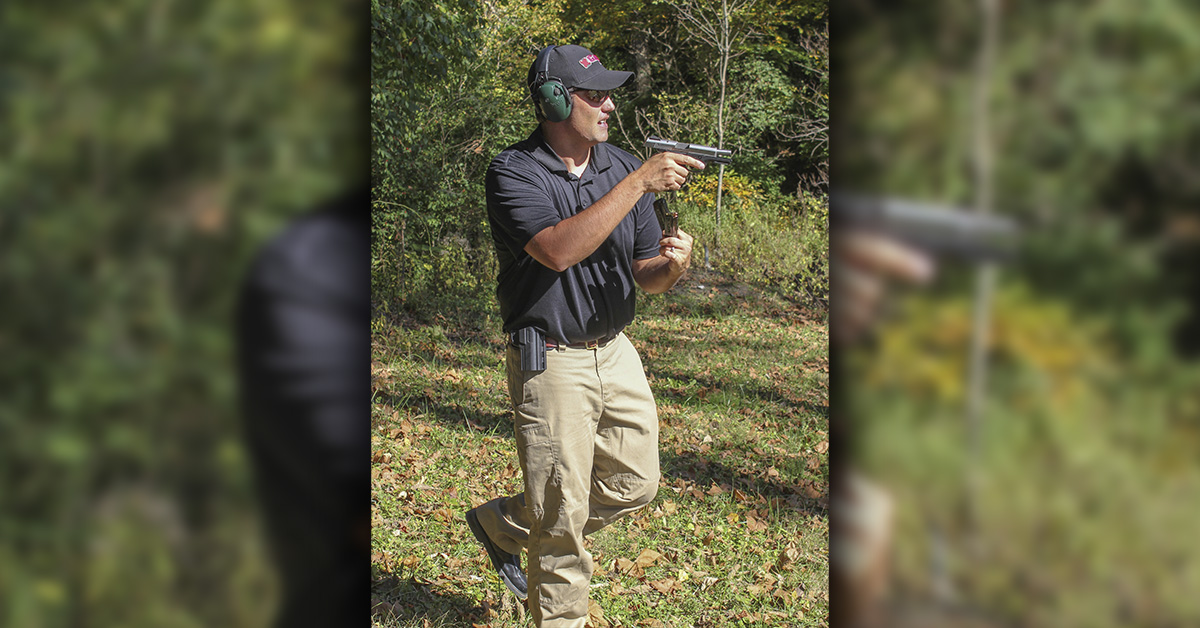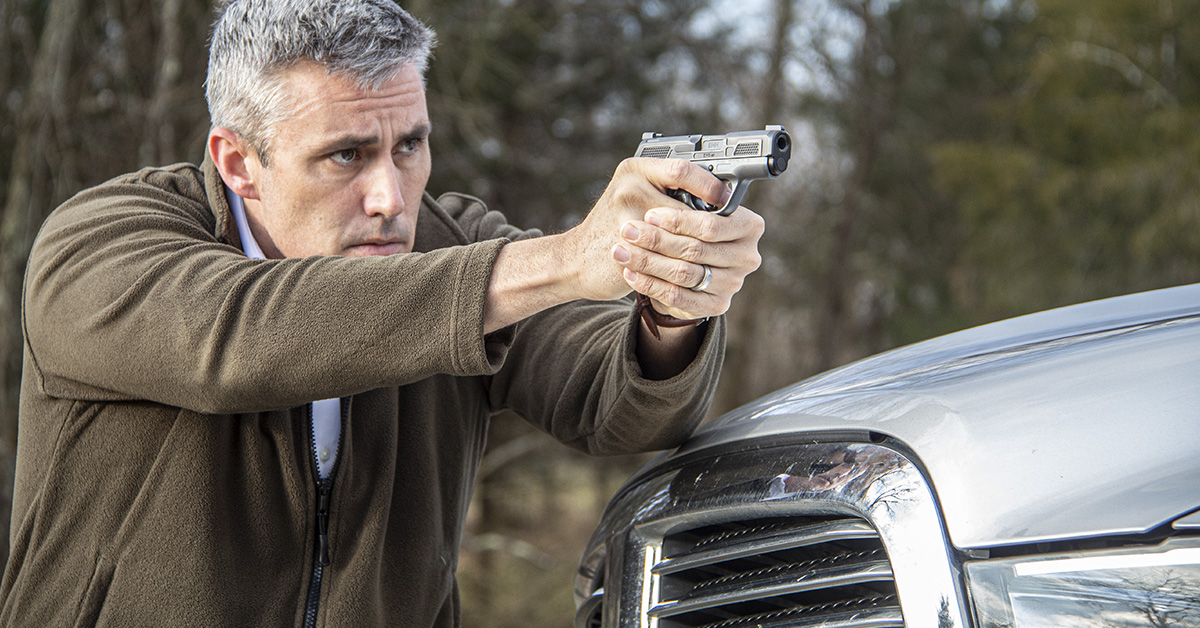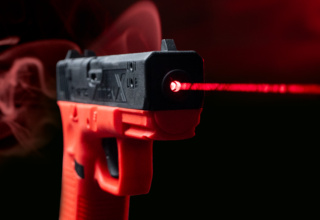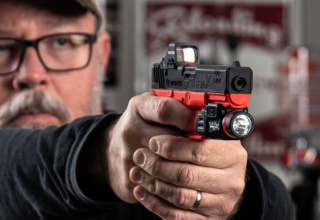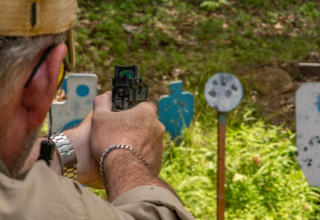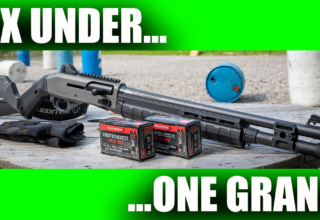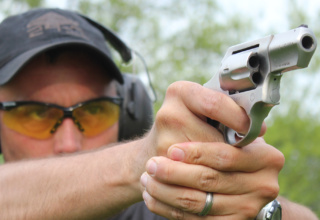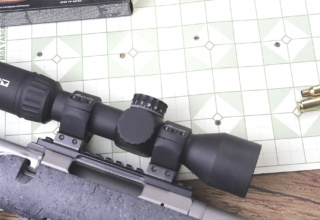Being mobile while you shoot allows you to reach cover and enhances your odds of survival
by Brad Fitzpatrick
Proper handgun shooting requires understanding the fundamentals of accurate shooting, but once you have learned the basics of defensive pistol shooting, it’s time to add movement drills.
Being able to move and shoot is an extremely valuable skill. First, it makes you harder to hit, and that’s critical to surviving a deadly encounter. It’s much easier to hit a stationary target than a dynamic one, so being able to alter your position while returning fire increases the odds of survival.
Movement also allows you to reach cover, and doing so will allow you to escape the threat or, that failing, provides you with an opportunity to reload. Movement can also allow you to put distance between you and a threat, which can buy you more time to defend yourself.
I try to add movement to drills whenever possible, and that’s because being mobile increases my odds of survival. But, as with other training, you will only be able to move properly in stressful situations if you have practiced the skill again and again during non-stressful training sessions.
Here’s a primer of how to effectively add movement to your practice regimen.
Slow to Start
Many shooters tend to move too quickly when they begin adding mobility to their shooting drills. It’s not a race. Remember that you are building a foundation for future training, so bad habits picked up early in your training may haunt you as you progress and improve. Going too fast can also create a dangerous situation where you tie up your feet and fall.
I begin with a single-step drill. From the shooting line (about 5 to 7 yards on paper targets to start), take one step to the right and fire a shot at the center of the target. The goal should be to take positive steps and avoid crossing your feet, which can result in falls. You must also make certain that the area where you are running drills is clear.
Repeat moving one step left and firing, then move forward a step and back a step. Repeat the drill consistently and maintain your sight picture as you move. This will likely be difficult at first, but to improve your performance, keep your upper body stationary. When you are beginning to add movement drills, make them simple and routine: step, plant, fire, and repeat. Eventually, you should be more skilled and more fluid, allowing you to step and fire quickly as you try to escape a deadly threat.
Adding Cover
In a shooting, you will be out of the line of fire if you reach suitable cover like a brick wall, which offers you protection from incoming fire and allows you to reload, move, and escape out of sight and get away from the threat.
My favorite item to use is a barrel, and since my shooting range regularly hosts IDPA events, there are generally barrels lined along the edges of the range. These are light enough that, even alone, I can maneuver them into position. When they are placed on the range, I begin to the right or left and shoot, move, and hide behind cover as I reload. I then walk to the opposite side and repeat.
You’ll almost certainly perform better moving in one direction than another. For example, I typically shoot movement drills much more accurately when I’m moving from the left to right than I do from right to left. I know this, and I try to run more drills to the left than the right. Cover may not always be available on my right side, and to be truly effective at moving in defensive shooting scenarios, you must be able to move both to the right and left equally well.
Moving Backward
Being able to move backwards and shoot accurately is highly beneficial. First, you are placing more distance between yourself and a threat. There’s an adage that an attacker who is 21 feet or closer can reach you before most shooters can draw their gun and fire. Being able to take one or two steps backwards provides you with vital time to draw and fire on an attacker with a deadly weapon who is trying to reach you. Because of the “21 foot” rule, I prefer to start my backward movement drill at 7 yards. From there, I will draw and fire one shot with each step as I move away from the target.
In some instances, you may need to move backward to reach cover. Being able to move backwards is also valuable to escaping a threat. This is particularly true when you exit your home, work, or other building and find yourself confronted with an attacker. You may need to immediately return fire, but there’s no reason to stand in the open and exchange gunfire if you can move backwards a step or two and reach secure cover.
Likewise, simply turning around and running for the door leaves you open to being attacked, so the ideal defensive situation is to be able to draw a firearm, shoot, step backwards, and reach cover. Once you are in a secure environment, you can get to a safe location and call for help.
Safety Considerations
You should follow basic firearms safety procedures by treating guns as though they are always loaded, keeping the muzzle pointed in a safe direction, and making certain you have a secure backstop that you know will safely stop your bullet without risk to anyone. Of course, eyes and ears are always critical. But movement increases the potential for falling with a firearm in your hand, which is never a good circumstance.
The primary reason most shooters fall while practicing movement drills is because of tripping hazards on the range. I prefer to do these drills on a flat surface with no grass and have plenty of solid footing (loose gravel can be a hazard). Keep the area around you clean.
The Value of Movement
We carry defensive firearms to defend our lives, but your ability to protect yourself and your family depends on how effectively you can operate that firearm in stressful situations. If I find myself in the sights of an attacker intent on mayhem, I certainly don’t want to present myself as a stationary target, and that’s why I incorporate movement into my drills. By adding movement, I up my odds of survival because I am less likely to be hit by an attacker’s bullet and more likely to reach safe cover. But I also understand (and you should, too) that to be prepared to move and shoot under duress, I must practice it consistently because, like other firearms skills, this, too, is perishable.
As you move forward with your firearms training, incorporate movement drills into your curriculum. Go slowly at first, always make safety your top priority, and build your skills so that you can increase your odds of survival.
- Six Great Shotguns Under $1,000 (Plus One Shotgun Everyone Should Own) - November 28, 2025
- Eight Great Revolvers for Self-Defense - September 23, 2025
- TESTED: Steiner H6Xi 2-12x42mm RFP Riflescope - April 25, 2025

